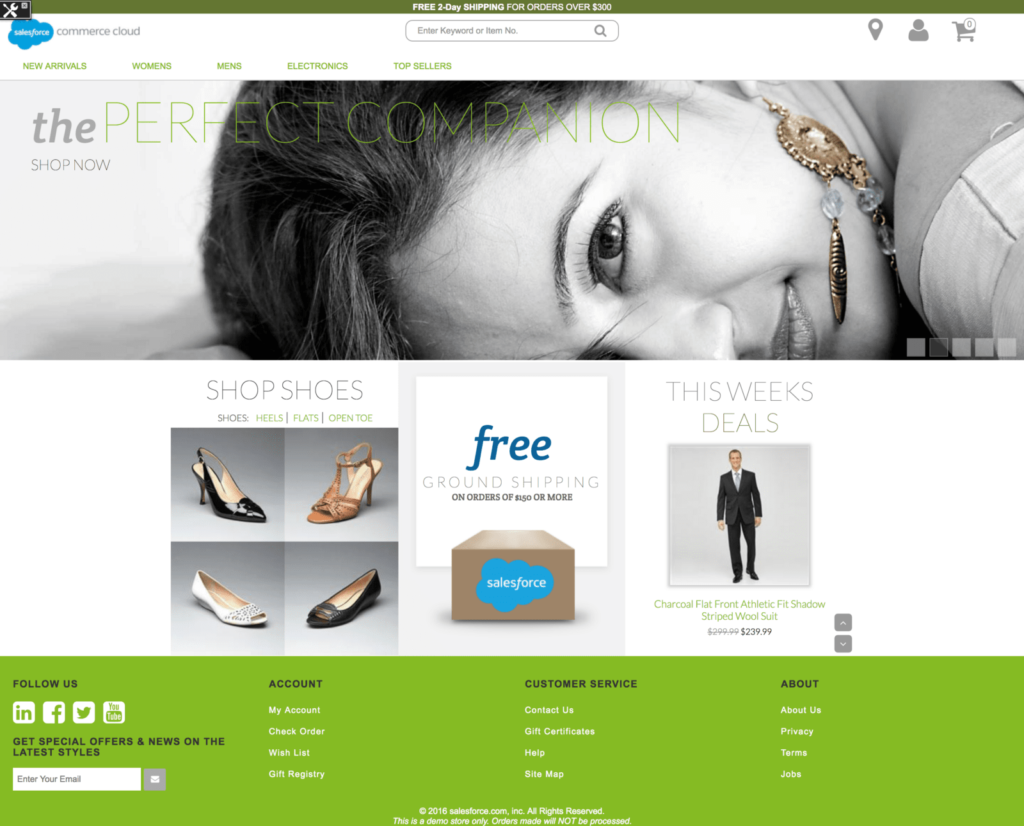Salesforce Commerce Cloud users have been launching rapidly new storefronts on Storefront Reference Architecture (SFRA) since 2018/2019 when Salesforce launched SFRA.
Currently, SiteGenesis is used by 1,475 Salesforce Commerce Cloud Stores.
In this blog, I explain the key differences between SFRA and SiteGenesis, and how that can affect your performance.
What is Storefront Reference Architecture (SFRA)?
2018 Salesforce rolled out Storefront Reference Architecture to enable brands to build state-of-the-art shopping experiences quicker and easier than before, across all devices. SFRA has to build Mobile-First to provide better customer experiences for mobile shoppers, who are nowadays the majority of online shoppers.

SFRA improves mobile shopping experiences: Salesforce built SFRA with a mobile-first approach. The framework is entirely responsive to any screen size, providing an optimized shopping experience from any screen.
What is Salesforce Commerce Cloud SiteGenesis?
2016, Salesforce acquired Demandware, which was originally built on Intershop. Once Demandware launched the SaaS model for eCommerce in 2004, since Salesforce acquired Demandware it was running on SiteGenesis, and nowadays it’s no anymore storefront that follows modern best practices and consumer behavior trends.

Site Genesis is a single code component more like a monolithic architecture. It is a comparatively old software architecture wherein developers need to duplicate templates and modify the existing code to add new features to the application.
The Key Differences Between SFRA and SiteGenesis
Maintenance and Scalability
SFRA
Storefront Reference Architecture has improved scalability. The inheritance model encourages modular code and smaller changes.
SiteGenesis
SiteGenesis has a legacy model, which is more challenging to maintain as the codebase ages.
Customer experience
SFRA
SFRA’s Mobile-First approach perfectly meets the modern consumer’s demands. SFRA includes functions such as data-driven insights, heat mapping, and shopper journey analysis that help merchants to improve conversion rate and store performance.
SiteGenesis
Sitegenesis includes desktop responsive design and features that are possible to maintain within the storefront codebase. Customer Experience enhancement is more challenging with SiteGenesis.
Integrations
SFRA
SFRA has improved support for integration and automated testing capabilities, including unit, integration, and functional tests.
SiteGenesis
SiteGenesis includes support for integrations, but it is lacking compared to SFRA’s support.
Total Cost of Ownership
SFRA
Storefront Reference Architecture is designed using a Mobile-First approach and improvements on architecture to reduce complexity and Total-Cost-of-Ownership compared to SiteGenesis.
SiteGenesis
Enhancing customer experiences and maintenance, SiteGenesis results in a higher Total-Cost-of-Ownership compared to SFRA.
Digital Commerce Advisor is here to help Salesforce Commerce Cloud brands to improve their customer experiences with SFRA. Contact our Salesforce Solution Specialists to reach more about how we can help you.



